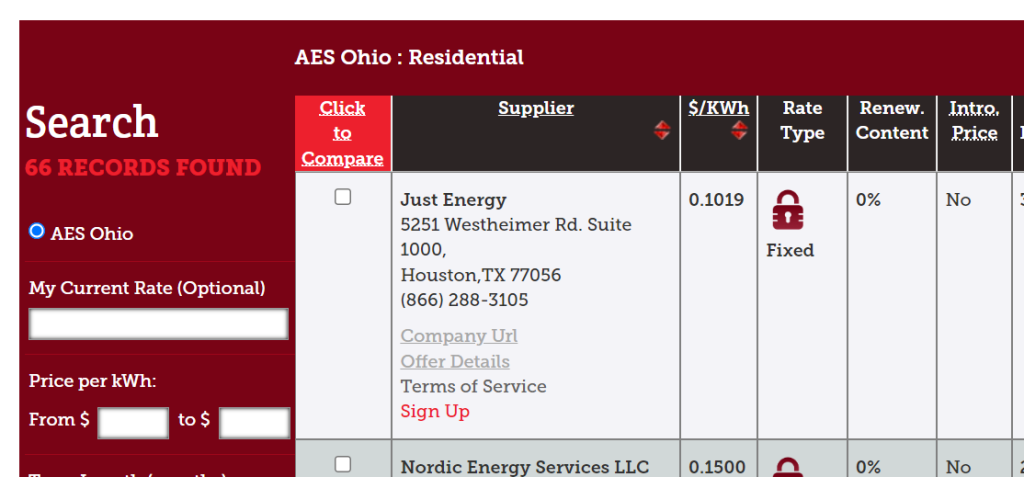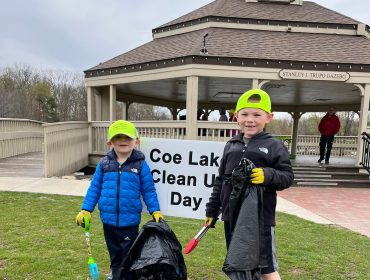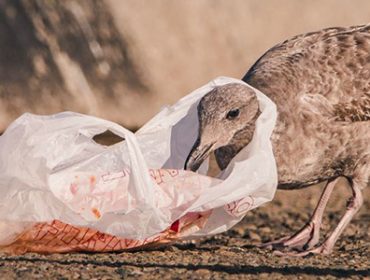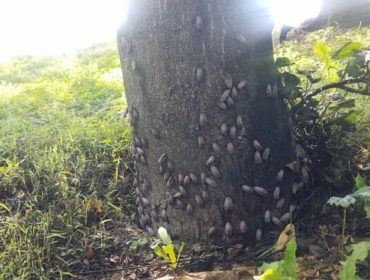
4 Ways to Protect Your Health While Combating Climate Change
Although it seems like Ohio is a safe haven from extreme weather, Ohio’s climate has changed and it is affecting our health and our community. Hotter, drier summers increase ground-level ozone pollution which irritates respiratory functions and allows disease-bearing ticks and mosquitoes to thrive.
Heavy storm events increased by 32% in Ohio from 1951 to 2012. (source: Climate Change in Columbus Ohio (2016) by the Great Lakes Integrated Sciences and Assessment Center (GLISA) and the University of Michigan) These heavy storm events cause stormwater overflows, flooding, and decreased water quality. Yet, we don’t have to feel powerless about climate change.
There are simple changes we can make to decrease climate change impacts. Since these impacts are primarily caused by pollution from the burning of fossil fuels, we can do the following:
1) Buy electric power from a renewable energy supplier
Choose a renewable energy electric supplier from the Public Utilities Commission of Ohio website. Once on the site, you can “Compare Offers” for gas or electric. Make the required selections and you will end up with a comparison chart. The key column is the “Renew.Content” column; this will tell you the amount of energy produced from renewable sources. For example:

NOPEC customers can request a renewable electric energy supplier instead of the default option.
2) Reduce energy consumption
Energy conservation measures range from no cost to moderate costs and more. You can set the ceiling fan to rotate counterclockwise to better cool you during warm weather. Additionally, you can reduce carbon dioxide emissions, by planting a tree. For best results, use a native deciduous tree with a high spreading crown on the south side of a home. This provides shade for the tree in the summer and sunshine to warm it in the winter. Find and use more tips at the U.S. Dept. of Energy’s website.
Transportation use produced 35% of carbon dioxide emissions from 1990 through 2019 according to the U.S. EPA. You can make a significant impact by biking, carpooling, or catching a bus to your destination. Find bike maps and other transportation information in the “Tools and Resources” tab of the Northeast Ohio Areawide Coordinating Agency website.
-Consider buying a car with a high mileage rating or a rechargeable electric car
Some years ago I got a deal on a used Toyota Prius which had a hybrid drivetrain, combining an internal combustion engine with an electric motor. The 2007 Prius has mileage ratings of 48 mpg city and 45 mpg highway. In 2019 my spouse and I went over our initial budget and paid over $30,000 on a new rechargeable Chevrolet Bolt. The purchase was eligible for a qualified plug-in electric drive motor vehicle federal income tax credit of $3750.
The Bolt has a range of 238 miles and will make a little more than three round trips to work. We installed a 240-volt outlet, like one for an electric clothes dryer, in the garage and it takes a few hours to charge to capacity. Then in November 2020, a recall notice stated that the Korean rechargeable battery had a risk of overheating that could melt or burn battery components. The Chevrolet mechanic made an adjustment to the battery’s charging rate to reduce overheating risk. A replacement battery was installed on April 12, 2022, and now can be charged to full capacity.
3) Maintain equipment for efficient performance
Space heating uses an average of 43% of household energy use and cooling about 8% (U.S. Energy Information Administration, 2015 Residential Energy Consumption). Changing air filters about every three months on the heating, air ventilation, and cooling systems in your home. Ensure these are serviced once per year. These are some of many energy-saving tips at the “Residents” tab on NOPEC’s website.
A hot water heater consumes an average of 19% of household energy. For better performance, drain a quart of water from the tank on a water heater to remove sediments and insulate the hot water pipes and tank to reduce heat loss. When replacing a hot water heater consider a tankless heater or another efficient type.
4) Buy Energy Star certified equipment when replacing old ones
Consider buying Energy Star certified products when replacing equipment or making an addition. Energy Star certified products, which use less energy than conventional products, may be found at energystar.gov. A local appliance repair shop advised my spouse that a third major repair of our worn-out twelve-plus-year-old clothes washer that squeals occasionally would not be cost-effective. I’m looking for a washer with a high Integrated Modified Energy Factor, which is a measure of energy efficiency that considers the energy used by the washer during the cycle, the energy used to heat the water, and the energy used to run the dryer.
We invite our neighbors to take action to mitigate climate change by reducing fossil fuel energy use or other actions. For example, my climate action will be to find and buy an Energy Star certified clothes washer. Please share your story on Sustainable Berea’s Facebook page.
Related News
Thank You! We Love the Coe Lake Clean-Up!
The Yearly Coe Lake clean-up was a success! 100 residents showed up to remove 20 bags of garbage from Coe Lake. THANK YOU!
Want Solar? Cuyahoga County Solar Co-op Can Save You 20%
Going Solar is easier than ever. Cuyahoga County Solar Co-op can help provide the resources you need to go green.
No More Plastic Bags? New Policies Fosters Community
Plastic bags are a bigger problem than most realize. Cuyahoga County will ban retailers from using these bags. That is a good...
The Fishing Foundation- Connecting Youth to the Outdoors
The Fishing Foundation is a non-profit organization dedicated to enrich people's lives with the sport of fishing.
Going Native in Suburbia; Simple Ways to Enhance Your Lawn
Enhancing your lawn with native species helps the environment and can make your yard easier to maintain; a more enjoyable open space.
Un-Heavenly Invasion of Invasive Trees in Berea!
An Invasive tree called Tree of Heaven provides a habitat for Spotted Lanternfly. This insect destroys crops in Ohio.





